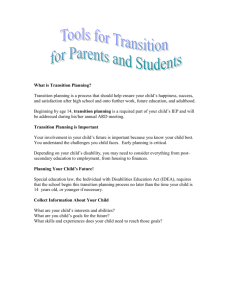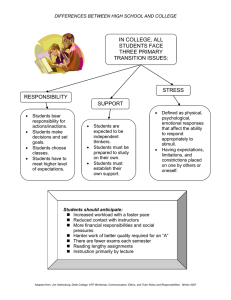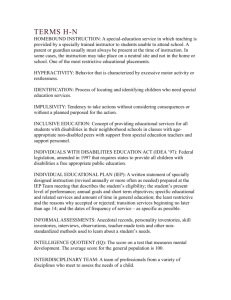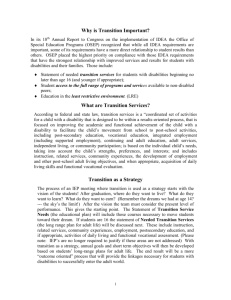Transition Brochure - NH Council on Developmental Disabilities
advertisement
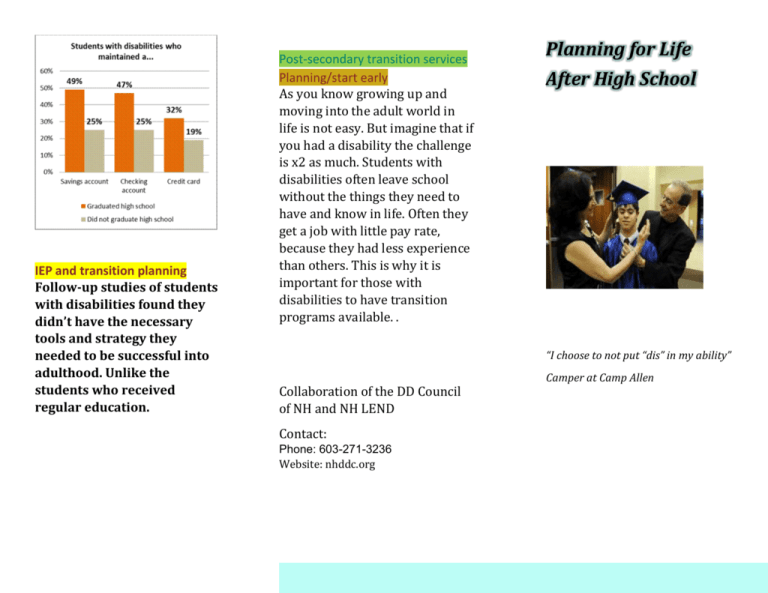
IEP and transition planning Follow-up studies of students with disabilities found they didn’t have the necessary tools and strategy they needed to be successful into adulthood. Unlike the students who received regular education. Post-secondary transition services Planning/start early As you know growing up and moving into the adult world in life is not easy. But imagine that if you had a disability the challenge is x2 as much. Students with disabilities often leave school without the things they need to have and know in life. Often they get a job with little pay rate, because they had less experience than others. This is why it is important for those with disabilities to have transition programs available. . Planning for Life After High School “I choose to not put “dis” in my ability” Collaboration of the DD Council of NH and NH LEND Contact: Phone: 603-271-3236 Website: nhddc.org Camper at Camp Allen Four to five years before leaving school Identify community support and service programs Mach career interests and skills with academic course/community work experiences Practice independent skills such as budgeting, cooking, and shopping Learn and practice appropriate interpersonal, communication, and social skills for different settings. (examples how to interact with peers. What’s the difference between appropriate conversations and not so good conversations topics to discuss with peers) Two to 3 years before leaving school Have them expand their experience in activities and expand their friendship. (Example: Hi my name is and I want to ask you if you wanted to see a movie with me.) Use local transportation options outside the family. If appropriate Have students communicate to others about their disability and explain to them his/her needs One year before leaving school Take responsibility of being on time for work, and appointments Register to vote and selective service Practice effective communications such has interviews and asking for help Specify and obtain paid employment with support as needed





